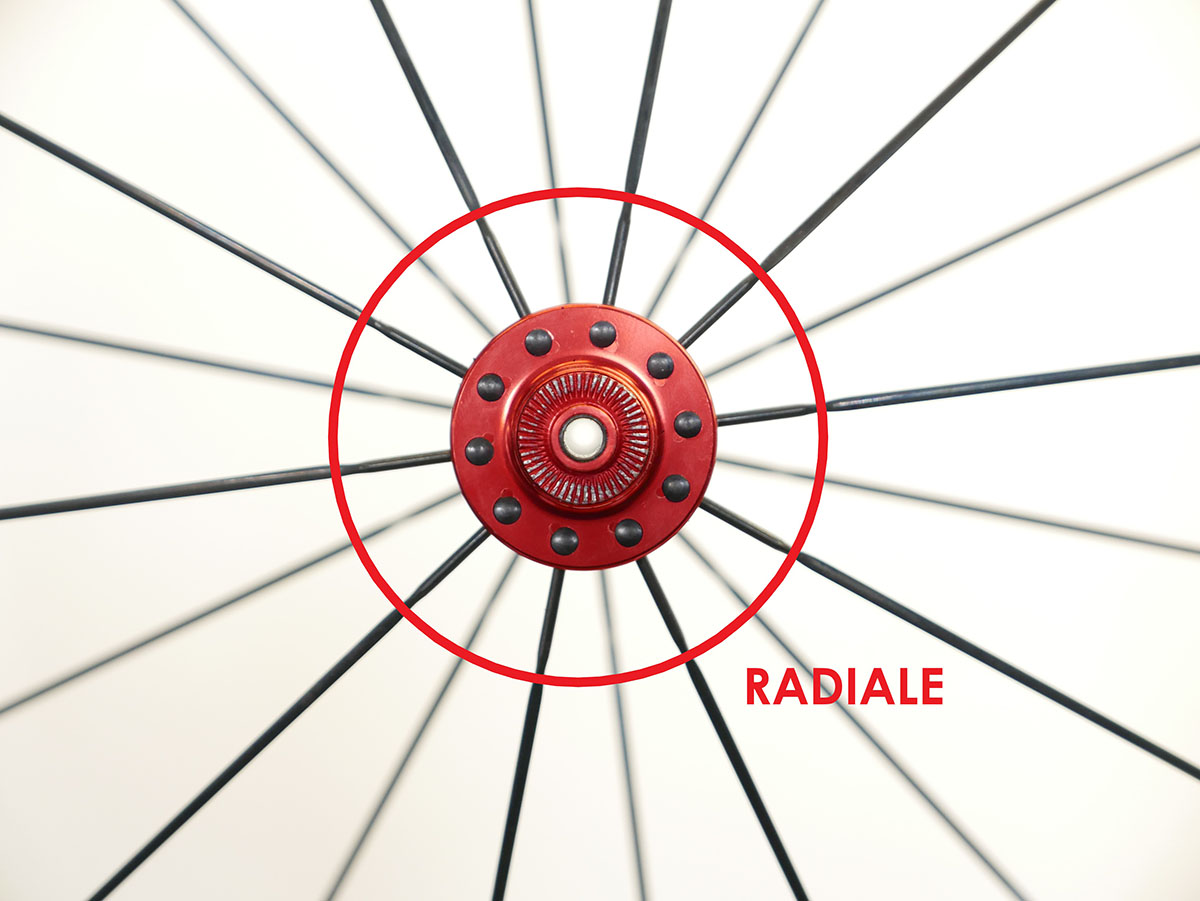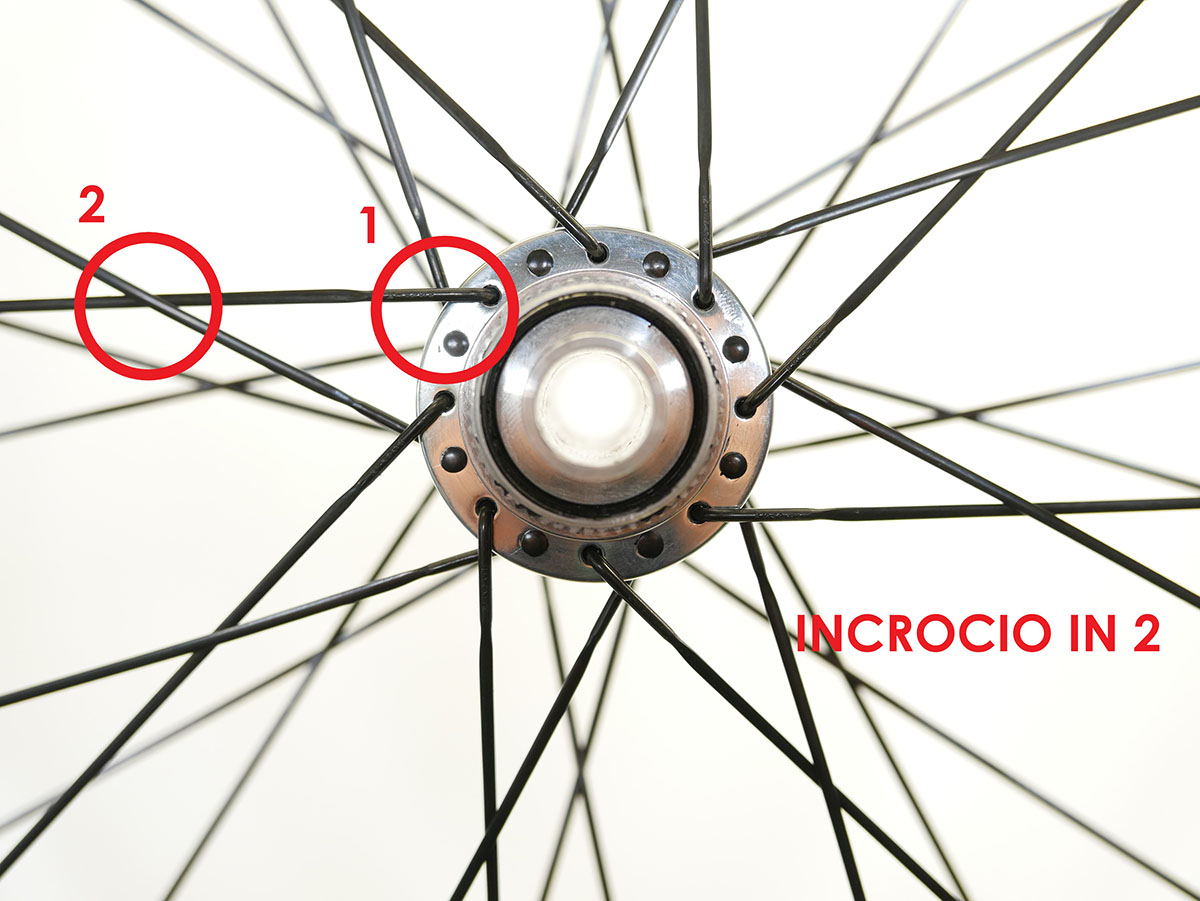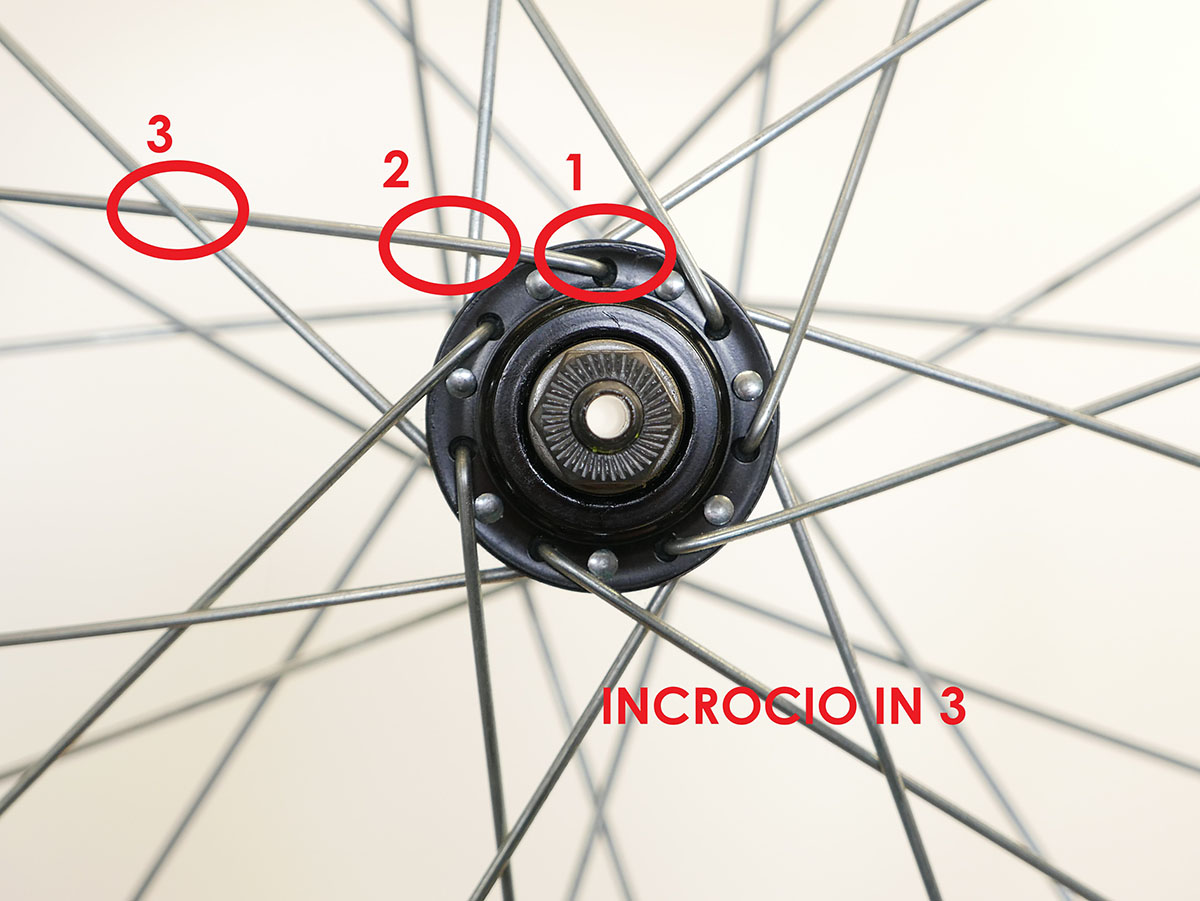ASSEMBLY
The three types of spoke lacing commonly used are:
- radial
- cross 3
- cross 2
Cross 3 means the spoke will cross three spokes from hub to rim, cross 2 means will cross two spokes, while when radially laced the spoke will not cross any spoke.
The wheels are mainly subject to three types of forces::
- the load of the bike and the cyclist;
- impacts from the terrain;
- pedaling torque and braking torque with disc brakes.
The purpose of using spokes that are tangent to the hub flange instead of being radial, is to provide a “spring” effect that absorbs the torsion and transmits the force to the rim to push the bike forward or slow down the cyclist and the bike itself in case of braking.
For road bike wheels all three types of lacing are used, for MTB mainly cross2 and cross3.
Radial spoking
It is often used for front road wheels to ensure greater rigidity. Some hub manufacturers do not guarantee this configuration due to the higher tension stress on the hub flange.
This type of assembly can be used on the Non Drive Side on rear road wheels (half-radial spoking). It is not suitable for any disc wheel configuration.
Number of spokes
Another consideration to make is the number of spokes to use. Rims and hubs are available in a wide range of drilling options, generally from 16 to 36 holes.
Rider weight and riding riding style are key factors for component choice and for the lacing pattern of the wheels.




